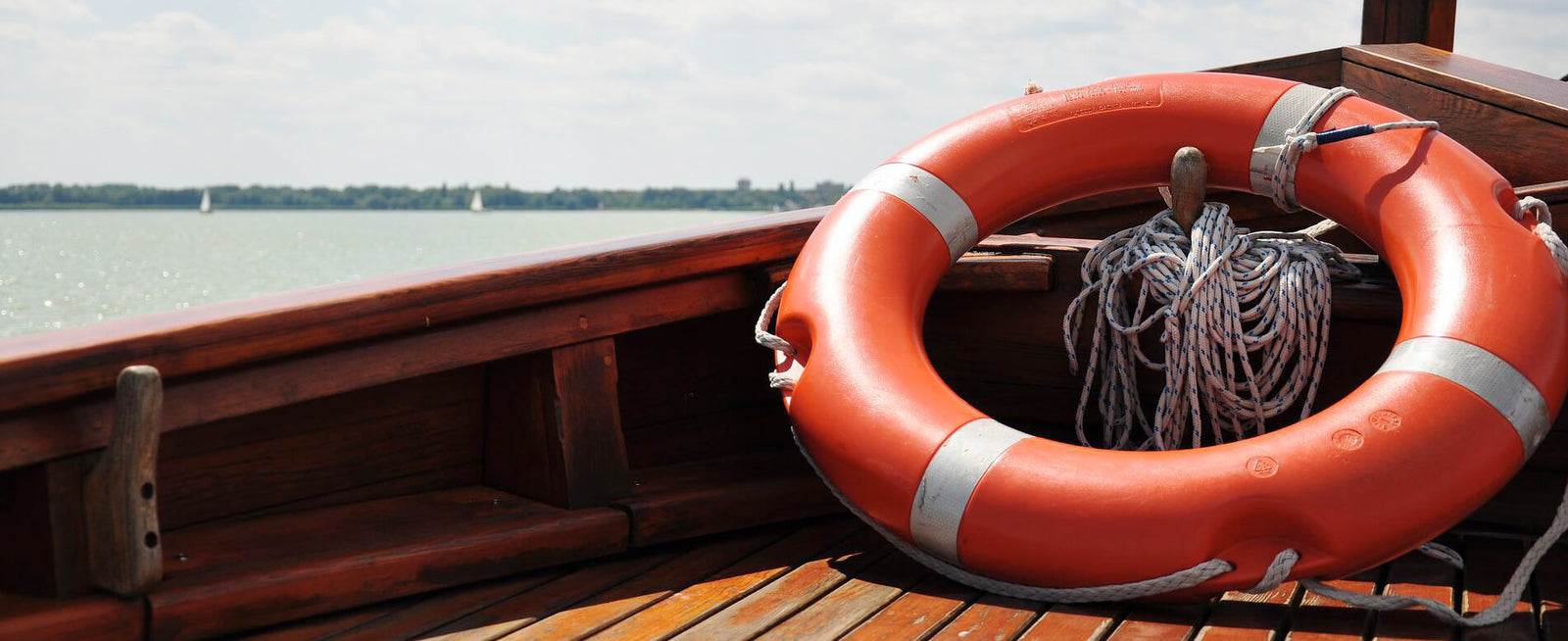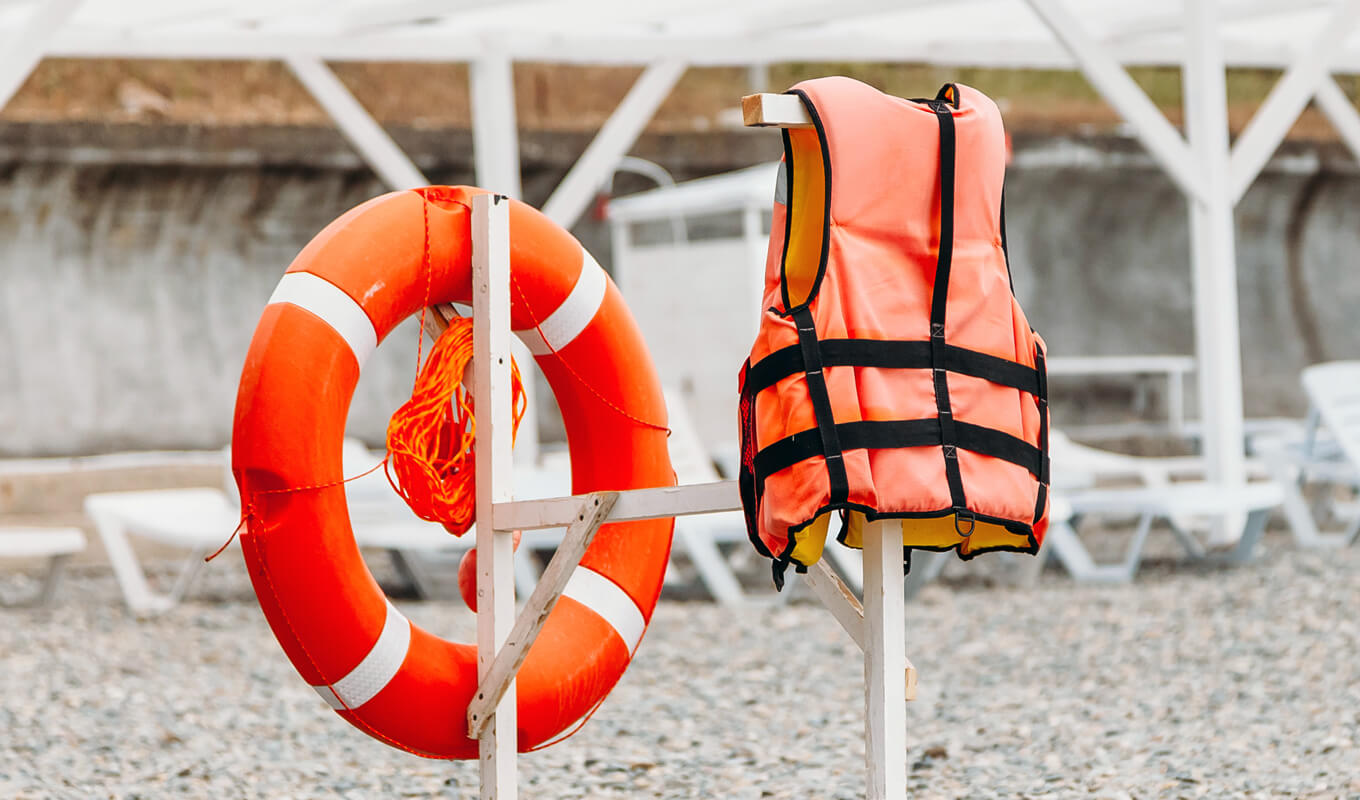Your Cart is Empty
Earth Day: An Extra $25 goes to Coral.ORG on all SUPs | Free Shipping over $50
Earth Day: An Extra $25 goes to Coral.ORG on all SUPs | Free Shipping over $50


A personal flotation device, or PFD for short, is an essential piece of kit that all boats and personal watercraft should have on board. Their sole purpose is to help you stay afloat and save your life in the event of an emergency.
When you think of personal flotation devices, your mind probably wanders to life jackets. And yes, these are a type of PFD, but there is also one that works in a slightly different way - the Type IV PFD.
We’re going to get into what exactly is a Type IV PFD and the advantages of having one on board. If you’re new to the boating world and are unsure on what makes the Type IV different from the rest, then keep on reading!
Topics Covered in This Article
In total, there are five types of PFDs, and each one serves a different purpose. The US Coast Guard bases the personal floatation devices on their flotation capabilities and how functional they are.
The most common PFD is the life jacket, which is classed as a Type III PFD. A Type III PFD is a life jacket that is suitable for calm waters where there is a chance of a quick rescue.
Type IVs, however, come in the form of a throwable flotation device. Its purpose isn’t to be worn like a Type III, but to be tossed to a person who is unable to swim or even drowning.
A throwable floatation device is usually made of materials that don’t absorb water, such as polyethylene or polyvinyl chloride. These materials provide the most buoyancy, which in turn keeps the person's head above water.

Type IV PFDs don’t just come in a particular style, and there are a few different variations that we’ll get into now. The following three PFDs are US Coast Guard approved and are suitable to be used on large boats, docks, or at swimming pools.
One you may not have seen before is a buoyant cushion. A buoyant cushion resembles, well, a cushion and has a strap on either side for the wearer to hold onto. You can even place your arms through the straps, but this isn’t necessary in order for the PFD to work.
The large surface area of buoyant cushions means you can place them under your chest and float on top of them.
A ring buoy is the most common variation of a Type IV PFD. Although ‘ring buoy’ is their official name, you may also know them as flotation rings, life rings, or life buoys.
If you’ve ever been to a swimming pool or dock, then you’ve most likely seen one. This throwable device is designed so the user can pull their head and arms through the center hole. Just like you would with a blow-up swim ring.
Ring buoys are typically the bright orange color you see on most PFDs, but they do also come in white and red. The modernized ring buoys are now even kitted out with lights to improve visibility at night.
The third variation of Type IV PFDs is the horseshoe buoy which, you guessed it, is shaped like a horseshoe.
Horseshoe buoys are more often than not made from a closed-cell plastic core that is covered with a vinyl coating. They come in different color options, but the most common are red, yellow, white, and blue.

Type IV PFDs are fairly straightforward to use. Here is a step by step guide:
So, now that we’ve covered what a Type IV PFD is, let’s get into the advantages of these life saving devices.
Type IV PFDs are extremely easy to use. Unlike their life jacket cousins, they’re simply thrown to the person in need, and they don’t have to be worn before the emergency situation occurs.
Traditional life jackets can be bulky and sometimes uncomfortable to wear. The extra weight of a life jacket also requires a lot more effort to remain face-up when in the water.
Type IVs, however, are extremely lightweight and provide better mobility for the wearer once in the water.

In our opinion, one of the best features of a Type IV PFD is the fact that they’re towable. If they don’t already come with an attached rope, you’ll find an attachment point where you can add one yourself.
This rope allows people on the boat to pull the person in the water to safety much quicker than a regular life jacket. It also means the people doing the pulling are at far less risk of falling overboard themselves.
The Type IV is extremely versatile as it can be used in a range of different water conditions, from slow-flowing rivers to oceans and swimming pools. You can even use them as extra support for people already wearing another variation of PFD.
Unlike life jackets, type IVs don’t have a size restriction. Life jackets require you to be a certain size for each individual jacket. If you’re too large for the jacket, it won’t be buoyant enough, and if you’re too small, you can end up falling out of it.
Type IVs, however, can be worn by anyone, no matter their size or height.
The Type IV variation of PFD can also be used as a location marker. For example, if someone falls off overboard while the boat is running, it can be thrown into the water to act as a marker for where the person was last spotted.
This marker will then give rescuers and the boat operator a good idea of where to return to in an effort to find the person who fell overboard.

The type IV PFD comes with some rules and regulations and not all water crafts are required to have one on board.
The federal law requires all boats over 16 feet in length to have life jackets for every person on board and at least one Type IV PFD.
The law doesn’t, however, specify which type, so the variation you choose is completely up to you. Although a boat under 16 feet doesn’t require a type IV, we highly recommended having one on board just in case.
For all the kayakers, canoers, and SUPers out there, a Type IV PFD isn’t required. Let’s face it, personal non-motorized watercraft such as these have very little room to begin with, so the state laws only require a life jacket to be worn by all parties on the vessel.
Not all PFDs are US Coastguard approved, so before purchasing one, it’s best to double-check.
The PFD should also be accessible to anyone who needs it. That means it needs to be visible and not hidden away under seats, lockers, or in the cockpit.
A bright-colored PFD is far easier to see in an emergency, so that’s why the international distress orange is widely used for PFDs of all types.
16.5 pounds of buoyancy is the recommended size for adults as it ensures their head remains above the water at all times.
Type IV PFDs shouldn’t be a complete replacement for a life jacket. They should only be used in emergency overboard situations, and the federal law requires all personal watercraft to carry a life jacket that fits each and every person on the vessel.

Using a Type IV PFD is ideal when there is heavy boat traffic. The closer you are to other boats, the more likely you are to be rescued.
PFDs work best in calm waters, and this is no exception for the Type IV. The sole purpose of a personal floatation device is to keep the person afloat, and the absence of waves of choppy waters allows the type IV to do just that.
Even if the person or people in the water are wearing other personal flotation devices, it doesn’t hurt to give them a helping hand back to the boat.
Depending on how bad the weather is, the waves, wind, and water currents could end up dragging the PFD away from the person in need.
As type IVs need to be grabbed onto, throwing it out to an unconscious person is practically useless.

Exposure to the sun and high temperatures can deteriorate your type IV PFD extremely quickly.
The best solution to keep your PFD out of the sun is to purchase a ring housing. Ring housings protect it against all the outdoor elements and also give it a permanent and well-known location on board.
Saltwater can encourage the growth of mold and mildew, so it’s best to rinse the PFD with freshwater regularly. Even if it hasn’t been in direct contact with the water, sea spray can be just as bad.
Holes in your PFD can cause the inner polyurethane foam to shrink or deform, which in turn lowers the effectiveness, so take the time to regularly check over your PFD to ensure it’s in its best working condition.
Make sure the PFD is completely dry before storing it away, as water logging can degrade the materials over time.
A Type IV PFD is a throwable flotation device that is tossed into the water to help a person who is drowning or unable to swim.
Type IV PFDs come in three variations: a ring buoy, a buoyant cushion, and a horseshoe buoy.
The ring buoy is the most popular of the three and resembles an inflatable swimming ring. A buoyant cushion looks fairly similar to a seat cushion and is placed under the chest of the person in need. Finally, the horseshoe buoy can be wrapped around the wearer to keep their head above water.
Type IV PFDs should be used in conjunction with a life vest and should never be the only PFD variation on board.
The greatest disadvantage of a Type IV PFD is the fact that it can’t be used on unconscious people. If someone falls unconscious falling off the boat or for any other reason, they wouldn’t be able to grab the PFD like they need to.
Wearing a life jacket, however, keeps an unconscious person's head above water which will ultimately save their life.
Any vessel over 16 feet in length must have fitted life jackets for every passenger on board, as well as at least one Type IV PFD.
Non-motorized personal watercraft like canoes, kayaks, and paddle boards aren’t required to have a Type IV PFD, but they must have a fitted life jacket for each passenger.
A PFD should be worn before the boat starts up its engine. Accidents can happen at any point on the journey, and it is important to be prepared for them.
You should make it a habit to securely fasten your PFD before setting off on the water.
Comments will be approved before showing up.